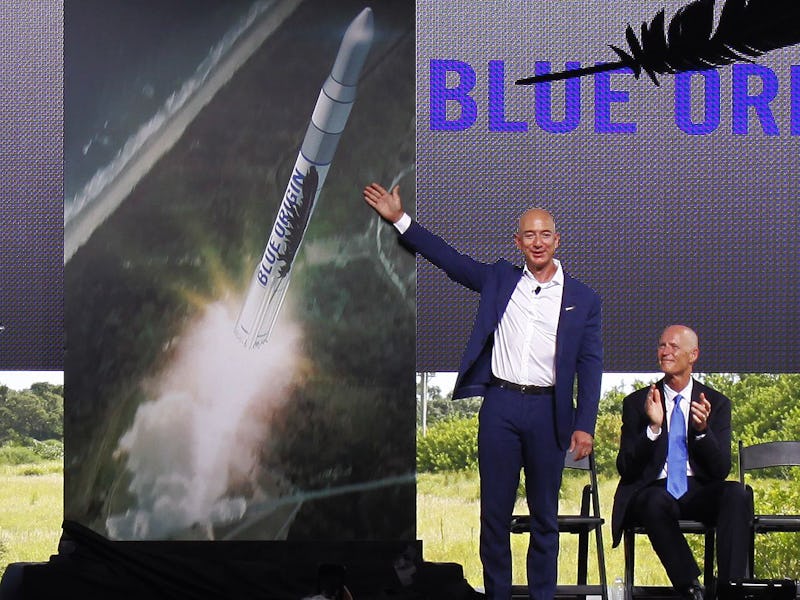Blue Origin's 'New Glenn' Rocket Will Tower Above SpaceX's Falcon

Jeff Bezos’s aerospace company just shared plans for its new, reusable, and absolutely enormous rocket: the “New Glenn.” The three-stage rocket from Blue Origin will be the largest out of the United States since NASA’s Saturn V used during the Apollo missions.
The announcement of New Glenn — named after John Glenn, the first American to orbit Earth — marks a significant step for Blue Origin and Bezos, who together hope to get “millions of people living and working in space.” It’s therefore also a significant step for humanity.
The New Glenn rockets are sleeker, more 2016-versions of the 40-year-old Saturn V. Their diameter is just 23 feet, as opposed to Saturn V’s 33. There’s a two-stage version and a three-stage version; the former is 270 feet tall, and the latter is 313 feet. Saturn V, for comparison, was 363 feet tall. New Glenn’s liftoff thrust is 3.85 million pounds, which power comes from seven of Blue Origin’s own advanced, BE-4 rocket engines. BE-4s use liquefied natural gas as fuel and liquid oxygen as an oxidizer; Saturn V, on the other hand, used literal rocket fuel (RP-1), and its liftoff thrust was almost eight million pounds. Though Blue Origin did not share the mass of the New Glenn rockets, they are presumably lighter than Saturn V’s 6.5 million pound body (and so require less thrust).
The New Glenn rockets
Blue Origin intends to launch its New Glenns before the end of the decade. About three years is a reasonable guess: The space exploration company states that its BE-4 engines will be ready for liftoff in 2019. Aside from the now-defunct Saturn V, the three-stage New Glenn will be the only rocket big enough and powerful enough to take humans beyond low earth orbit — which is Bezos’s ultimate goal. Bezos, again, wants humans living and working in space, and — at 52 years old — he probably wants humans living and working in space as soon as possible.
Until the rockets begin to spur humanity’s long-forecasted next frontier, they’ll deliver satellites to space. (Blue Origin would do well to learn from Elon Musk’s competitor, SpaceX, and take some extra precautions, though.)
Bezos, true to form, was careful to tease Blue Origin’s next project in the announcement, emailed to subscribers of the company newsletter on Monday morning. New Glenn rockets are a requisite step in his plan, but Bezos hinted that New Armstrong — the next project in the pipeline — will be the real deal.
Blue Origin’s first rocket was called New Shepard. Alan Shepard was the first American to travel into space (in 1961), though he did not achieve orbit. Glenn made it to orbit (in 1962). Neil Armstrong, needless to say, was the first person to walk on the moon (in 1969). As far as metaphors go, Blue Origin’s not leaving much up to doubt. New Armstrong, whenever it’s ready, will get us … elsewhere.